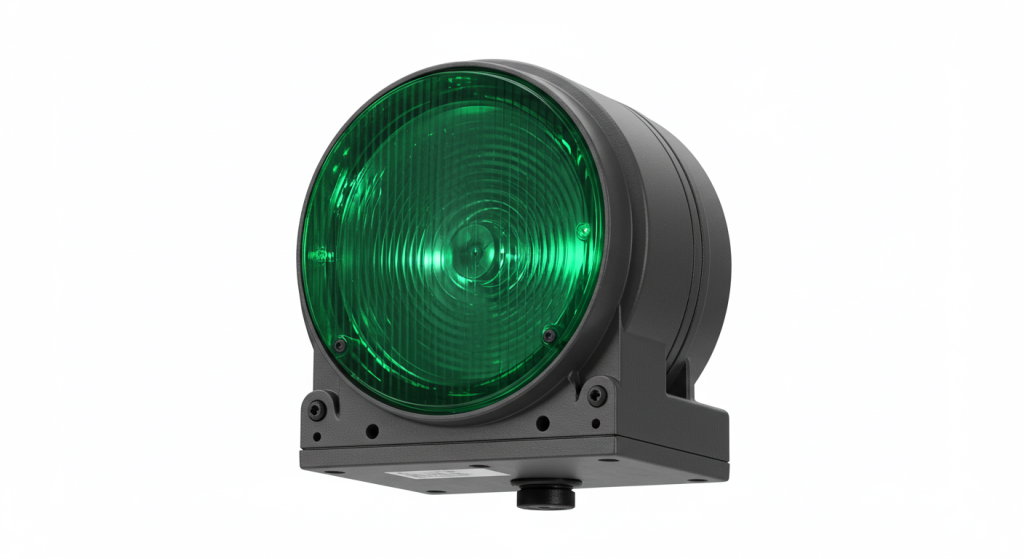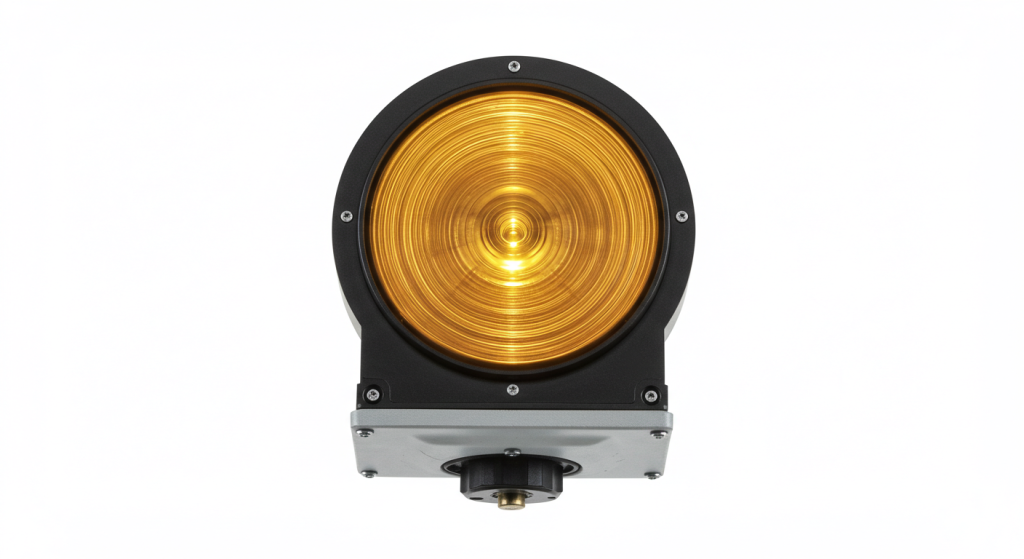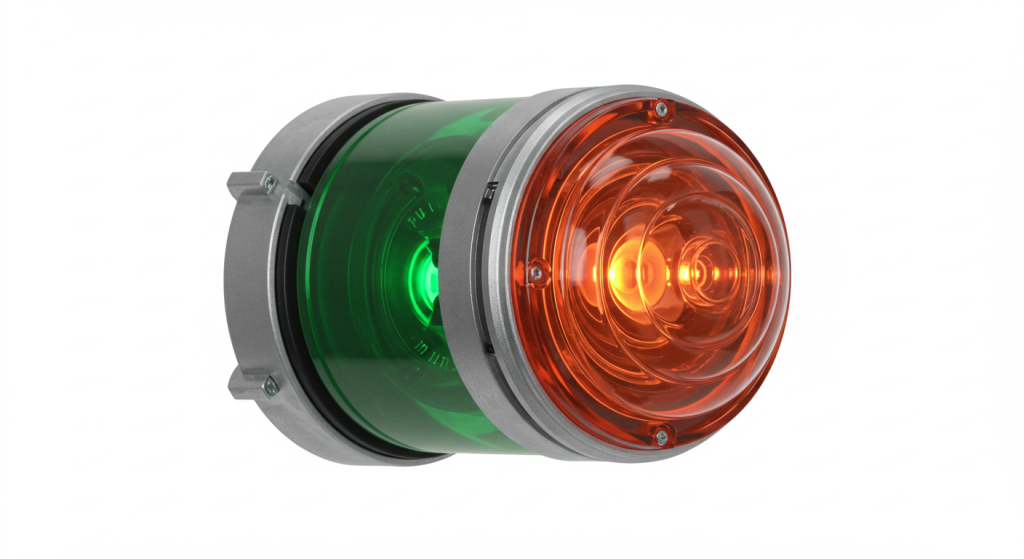The solar obstacle light controller is a key component in the solar obstacle light system, responsible for managing and controlling various functions of the solar obstacle light, including charging management, battery charging and discharging control, and lighting switch control. This article elaborates on the working principle, hardware design, software algorithm, and importance and advantages of the solar obstacle light controller in practical applications. Through in-depth analysis of its various components, it reveals how the solar obstacle light controller efficiently utilizes solar energy to ensure stable and reliable operation of the obstacle light, providing key technical support for aviation safety and warning lighting in other fields. At the same time, the challenges faced by current technology and future development trends were discussed, aiming to provide comprehensive and in-depth references for research and practice in related fields.

Definition and Function
The solar obstacle light controller is an electronic device responsible for managing and controlling the energy conversion, storage, and distribution in the solar obstacle light system. It ensures that the electrical energy collected by solar panels can be effectively converted and stored in batteries, and provides stable power supply for LED light sources when needed. With the increasing global demand for clean energy and the increasingly strict aviation safety standards, solar obstruction lights, as an energy-saving, environmentally friendly, and reliable warning lighting device, have been widely used in many fields, such as warning lighting for high-rise buildings, communication towers, bridges, chimneys, and other towering obstacles. As the core component of the entire system, the solar obstacle light controller plays a crucial role in coordinating the energy conversion and distribution between solar panels, batteries, and obstacle lights, ensuring stable and efficient operation of the system under various environmental conditions.
Working principle
The basic working principle of the solar obstacle light controller is based on monitoring and controlling the output voltage and current of the solar panel, as well as managing the charging and discharging status of the battery, in order to provide stable and reliable power for the obstacle light. When there is sufficient sunlight during the day, the solar panel generates electricity, and the controller first detects the output voltage of the panel. When the voltage reaches a certain threshold (usually higher than the charging voltage of the battery), the controller starts the charging circuit, converts the electrical energy generated by the solar panel into a form suitable for charging the battery, and charges the battery. During the charging process, the controller will use appropriate charging algorithms such as constant current charging, constant voltage charging, and float charging stages to ensure that the battery can be safely and efficiently fully charged, while avoiding overcharging that can damage the battery’s lifespan. When night falls or the light intensity weakens to a certain extent, the output voltage of the solar panel decreases. After the controller detects this change, it will automatically switch to discharge mode. At this time, the controller controls the battery to supply power to the obstacle light according to the preset program and environmental lighting conditions, so that the obstacle light works according to the specified requirements such as light intensity, flashing frequency, and color, in order to achieve effective warning effect. At the same time, the controller will continuously monitor the voltage and current of the battery. When the battery level drops to near the discharge termination voltage, corresponding protective measures will be taken, such as reducing the brightness of the obstruction light or adjusting the flashing frequency, to extend the battery’s usage time and prevent damage caused by excessive discharge of the battery.

Hardware Design
Power circuit
The power circuit mainly includes solar panel interface circuit, battery charging circuit, and voltage stabilization circuit. The interface circuit of the solar panel is responsible for introducing the electrical energy output by the panel into the controller, and performing preliminary filtering and voltage stabilization processing to reduce the impact of voltage fluctuations and noise on subsequent circuits. The battery charging circuit usually adopts switch power supply technology, which achieves efficient charging of the battery by controlling the conduction and disconnection of the power switch tube. During the charging process, the circuit will monitor the voltage, current, temperature and other parameters of the battery in real time, adjust the charging current and voltage according to these parameters, and ensure the safety and stability of the charging process. The voltage regulator circuit is used to convert the voltage output by the battery into a stable DC voltage, providing reliable power supply for other circuit modules of the controller.
Micro controller Unit (MCU)
The micro controller unit is the core control component of the solar obstacle light controller, responsible for the operation control, data acquisition and processing, logical judgment, and communication functions of the entire system. Common MCU selection should consider factors such as performance, power consumption, cost, and resource abundance. MCU needs to have sufficient processing power to quickly respond to various external events, such as changes in light intensity, battery status monitoring, etc., and make corresponding decisions based on preset programs and algorithms. At the same time, in order to reduce system power consumption, MCU usually supports multiple low-power operating modes. When the system is in standby or low load state, it can automatically enter low-power mode to extend the battery’s usage time.
Sensor circuit
The sensor circuit mainly includes a light sensor and a battery voltage and current sensor. The light sensor is used to detect the intensity of ambient light, convert the light intensity signal into an electrical signal, and transmit it to the MCU. The MCU determines the daytime and nighttime, as well as changes in light intensity, based on feedback signals from the light sensor, in order to control the charging of solar panels and the working status of obstacle lights. The battery voltage and current sensors are used to monitor the charging and discharging voltage and current of the battery in real time. These sensors amplify, filter, and convert the collected voltage and current signals, and transmit them to the MCU. The MCU determines the charging and discharging status, remaining power, and whether there are abnormal situations such as overcharging and over discharging of the battery based on these data, and takes corresponding protection and control measures.

Drive circuit
The driving circuit is used to control the working state of the obstacle light. According to the instructions of the MCU, the driving circuit can provide appropriate voltage and current for the obstacle light to emit light according to the specified requirements such as light intensity, flashing frequency, and color. The driving circuit usually uses power MOSFETs or transistors and other switching elements, and adjusts the output voltage and current through PWM (Pulse Width Modulation) technology to achieve precise control of obstacle lighting intensity. At the same time, in order to protect the driving components and obstacle lights, the driving circuit will also be designed with corresponding functions such as over current protection, over voltage protection, and short-circuit protection.
Software algorithm
Charging control algorithm
The charging control algorithm is one of the key components of the solar obstacle light controller software, with the main purpose of achieving safe and efficient charging of the battery and extending its service life. Common charging control algorithms include three-stage charging method, namely constant current charging, constant voltage charging, and float charging stage.
In the constant current charging stage, the controller sets a suitable constant charging current based on the capacity and initial state of the battery, allowing the battery to charge quickly while avoiding damage caused by excessive charging current to the battery. When the voltage of the battery rises to the preset constant voltage charging threshold, the charging process enters the constant voltage charging stage. At this stage, the controller maintains a constant charging voltage, and as the battery power increases, the charging current gradually decreases until the charging current drops to a certain threshold. At this point, it is considered that the battery is basically fully charged and enters the float charging stage. In the float charging stage, the controller supplements the battery with a small constant current to maintain the battery’s fully charged state and compensate for the battery’s self discharge loss.
Discharge control algorithm
The discharge control algorithm is mainly responsible for controlling the working status of the obstacle lights reasonably based on the battery level and environmental lighting conditions. At night or when there is insufficient light, the controller first determines whether the obstacle light can work normally based on the remaining battery power. If the battery is sufficient, the controller drives the obstacle lights to work according to preset parameters such as light intensity, flashing frequency, and color; When the battery level gradually decreases, the controller will extend the discharge time of the battery according to preset strategies, such as reducing light intensity, adjusting flashing frequency, or using intermittent lighting, to ensure that the obstacle lights can maintain a certain warning effect throughout the night or low light period, while avoiding excessive discharge of the battery.
Intelligent light control algorithm
The intelligent light control algorithm utilizes ambient light data collected by lighting sensors to achieve intelligent control of obstacle lights. When the daylight is strong, the obstacle lights are completely turned off to save battery power; As the light intensity gradually decreases, when the preset threshold for turning on the lights is reached, the controller automatically turns on the obstacle lights and adjusts the light intensity and flashing frequency in real time according to the changes in light, so that it can maintain good visibility and warning effect under different lighting conditions. In addition, the intelligent light control algorithm can adaptively optimize the lighting threshold and light intensity adjustment strategy based on local sunrise and sunset times, seasonal changes, and weather conditions, further improving the system’s energy efficiency and reliability.
Importance and advantages in practical applications
Energy Efficiency and Environmental Protection
The solar obstacle light controller can fully utilize solar energy, a clean energy source, to convert solar energy into electrical energy and store it, providing continuous power supply for the obstacle light. Compared with the traditional mains power supply method, the solar obstacle light system does not require the laying of cables, reducing losses during energy transmission, avoiding dependence on traditional energy, reducing carbon emissions, and having significant environmental advantages. In some remote areas or places where it is difficult to access mains electricity, solar obstruction light systems have become an economical and feasible lighting solution, providing strong support for ensuring aviation safety and warning lighting in other fields.
Reliability and stability
Through advanced charging control algorithms and battery management strategies, the solar obstruction light controller can effectively protect the battery, extend its service life, and ensure the reliability and stability of the system during long-term operation. Even in continuous rainy weather or insufficient lighting, the controller can adjust the working status of the obstacle lights reasonably, maximize the use of the remaining battery power, ensure that the obstacle lights can work normally during critical periods, provide reliable warning signals for passing aircraft, ships and other transportation vehicles, and reduce the risk of accidents.
Intelligent control and maintenance convenience
The solar obstacle light controller has functions such as intelligent light control and automatic charging and discharging control, which can automatically adjust the working mode of the obstacle light according to the ambient light and battery status, greatly reducing the need for manual intervention. At the same time, the controller can also be connected to the remote monitoring system through a communication interface to achieve remote monitoring and control of the obstacle light system, making it convenient for maintenance personnel to timely understand the operating status of the system, discover and solve potential problems in a timely manner, reduce maintenance costs and workload, and improve the maintenance convenience and management efficiency of the system.
Challenges and Development Trends Faced
Challenge
Although significant progress has been made in the technology and application of solar obstacle light controllers, there are still some challenges that need to be addressed. Firstly, the energy conversion efficiency of solar panels is greatly affected by environmental factors such as light intensity and temperature. In low light or high temperature environments, the output power of the panels will significantly decrease, which puts higher demands on the charging management and energy allocation of the controller. Secondly, the lifespan and performance of batteries remain an important factor restricting the development of solar obstruction light systems. Although optimizing the management of controllers can extend the service life of batteries to a certain extent, commonly used lead-acid batteries, lithium batteries, etc. still have problems such as limited energy density, short cycle life, high cost, and performance degradation in low-temperature environments. In addition, with the continuous expansion of the application field of solar obstacle lights and the continuous upgrading of technology, the requirements for the functionality and performance of controllers are also increasing, such as the need to support more communication protocols, have stronger anti-interference ability and intelligence, which also brings certain challenges to the design and development of controllers.
Development Trends
In order to address the above challenges, solar obstacle light controllers will present the following development trends in the future: firstly, further development of high-efficiency conversion and intelligent management technology. By developing new solar cell materials and control algorithms, we aim to improve the energy conversion efficiency of solar panels under different environmental conditions, and achieve more intelligent and refined management of the entire system, maximizing energy utilization efficiency and system reliability. The second is the innovation and breakthrough of energy storage technology. With the continuous emergence of new energy storage technologies such as solid-state batteries and super capacitors, future solar obstacle light systems are expected to adopt energy storage devices with higher energy density, longer lifespan, and more stable performance, thereby further enhancing the overall performance and competitiveness of the system. The third is the development of multifunctional integration and networking. The future solar obstacle light controller will integrate more functions, such as environmental monitoring, fault diagnosis, data communication, etc., to achieve interconnection with other intelligent devices, build a more intelligent and networked lighting control system, and provide users with more convenient and efficient service and management experience.
Conclusion
The solar obstacle light controller, as the core component of the solar obstacle light system, plays an indispensable role in ensuring aviation safety and warning lighting in other fields. By continuously optimizing hardware design, software algorithms, and adopting advanced control technologies, the solar obstacle light controller can achieve efficient utilization of solar energy and stable and reliable control of the obstacle light system, with significant advantages in energy efficiency, reliability, and intelligent control. Despite still facing some challenges, with the continuous advancement and innovation of technology, solar obstacle light controllers will inevitably develop towards greater efficiency, intelligence, reliability, and multifunctional integration, providing more solid technical support for the application of solar obstacle light systems in a wider range of fields and making greater contributions to global traffic safety and sustainable energy development.